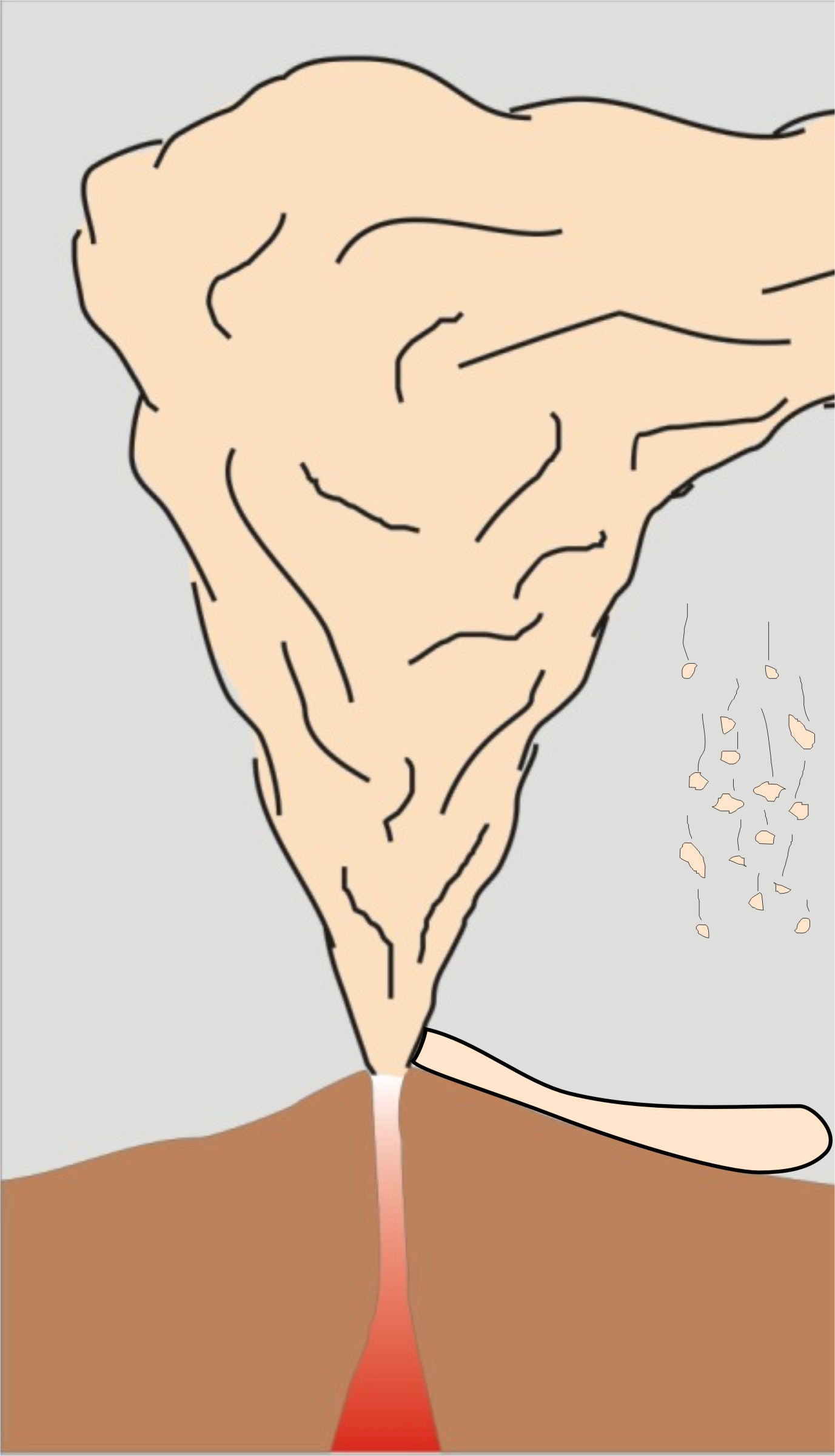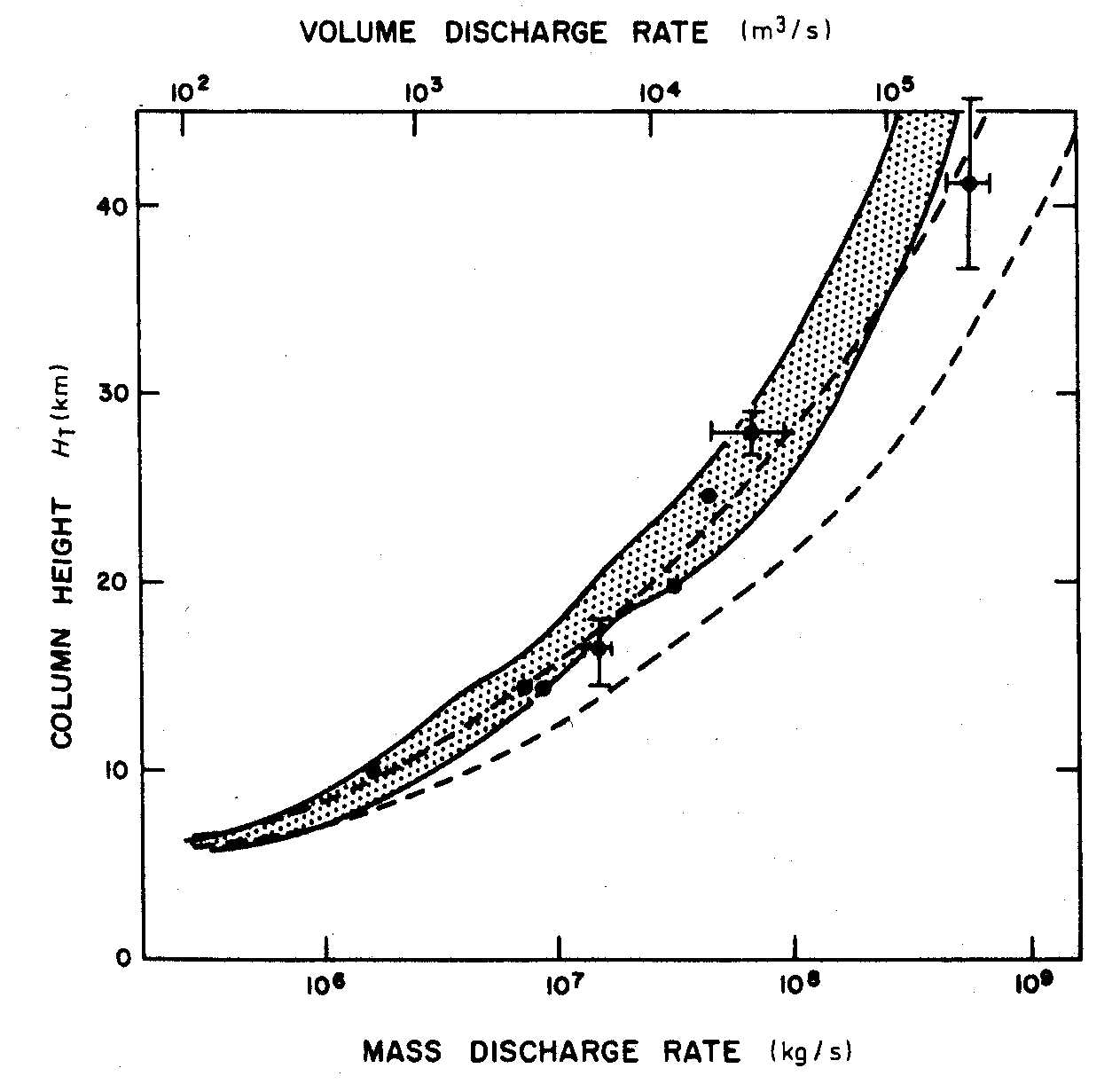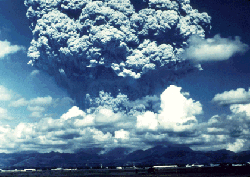
Neutral
Buoyancy and Lateral Spreading of the Plume
When the plume reaches a height of neutral buoyancy does it stop going
up? Somewhat surprisingly, the answer is no.
The reason is that the plume does not enter the buoyant region with a vertical velocity equal to zero. As the cartoon to the right shows, all that the buoyant interface (the dotted line in the figure) really indicates is that the particle is no longer being accelerated upward. At the buoyant interface, the upward force, Fb, is equal to the particles weight, thus there is no acceleration. Above this level, the particle is acclerated in the downward direction.
The plume will rise above height Hb to the total plume height Ht
Ht is generally approximately 1.3 times Hb. This height can be approximated with several techniques.
Carey and Bursik (2000) use the equation:
Ht = Q ^0.259, where Q is the volumetric flux in (m^3)/s.
A different method is described by Sparks (1986).

Sparks (1986) model for plume height
Using numerical modeling, Sparks related plume height to mass flux. Additionally, his model accounts for the affects of the tropopause -- the level in the atmosphere where the vertical temeprature gradient is no longer decreasing.
The plot to the right shows the total plume height, Ht as a function of mass flux for the tropical regions (stippled) and temperate regions. For both fields, the left curve represents magma erupted at 1000C, and the right curve shows magma erupted at 600C. Note the marked effects of the tropopaus on column height, and the effects of temperature.






